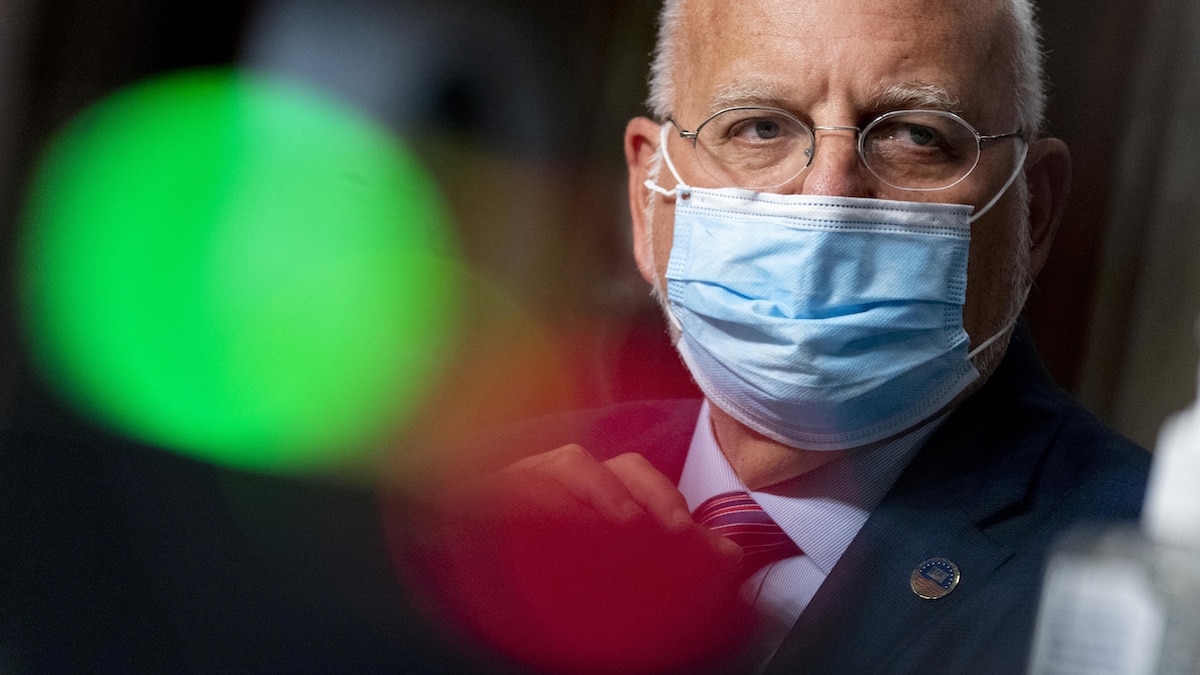
CDC Adds ‘Off and On’ Brief Encounters to Coronavirus Contact Guidelines

CDC Director Dr. Robert Redfield attends a hearing of the Senate Appropriations subcommittee reviewing coronavirus response efforts on Sept. 16, 2020 in Washington, DC. Andrew Harnik-Pool / Getty Images
The Centers of Disease Control and Prevention (CDC) has altered its guidelines that define close contact between people while also releasing a study that showed the novel coronavirus is able to be transmitted in brief interactions, as STAT News reported.
For several months, the CDC had defined close contact as spending more than 15 minutes within six feet of another person. On Wednesday, however, that definition changed to the CDC’s new guidelines, which say brief interactions that add up to 15 minutes over the course of a day now count as close contact, as the AP reported.
The definition was changed for the CDC’s quarantine guidelines, so people who spent 15 minutes or more with an infected person over the course of 24 hours know to self-isolate for 14 days. The guidelines were issued in response to a new study conducted by the CDC and the Vermont Department of Health that traced a coronavirus outbreak of six prisoners back to an employee at a Vermont correctional facility, as NPR reported.
An investigation of the outbreak used video evidence to piece together the employee’s day. It showed that the officer never spent 15 straight minutes with any one prisoner. However, over the course of an eight-hour workday, the employee had 22 interactions totaling 17 minutes with the six incarcerated people, according to STAT News.
Some of the interactions took place while the six incarcerated people were not wearing face masks, according to NPR.
“This article adds to the scientific knowledge of the risk to contacts of those with COVID-19 and highlights again the importance of wearing face masks to prevent transmission,” the CDC said.
“While a mask provides some limited protection to the wearer, each additional person who wears a mask increases the individual protection for everyone. When more people wear masks, more people are protected,” the CDC added, as The Washington Post reported.
In the first news conference that the agency permitted in more than eight weeks, Jay Butler, the CDC’s deputy director for infectious diseases, said Wednesday that the nation is “unfortunately seeing a distressing trend, with cases increasing in nearly 75 percent of the country,” as The Washington Post reported.
Butler also stressed that even though the public may be tired of all the suggestions from health officials, the importance of wearing masks should not be taken lightly as the weather cools and more and more interactions move inside, which increases the risk of transmission, according to The Washington Post.
The new guidelines also note that close contact can include if someone coughs or sneezes on you, hugging and kissing, as well as sharing eating utensils with an infected person.
“As we get more data and understand this COVID we’re going to continue to incorporate that in our recommendations,” said CDC Director Robert Redfield at the press conference, according to the AP.
The new guidelines will “mostly impact workplaces, schools and other places where people spend all day together off and on,” said Caitlin Rivers, a senior scholar at the Johns Hopkins Bloomberg School of Public Health, to NPR. She added that the expanded definition of close contact has “the potential to significantly increase the number of people who are asked to quarantine.”
- Trump Admin Rejects CDC Reopening Guidelines - EcoWatch
- CDC Recommends Big Changes to Office Life - EcoWatch

 233k
233k  41k
41k  Subscribe
Subscribe 